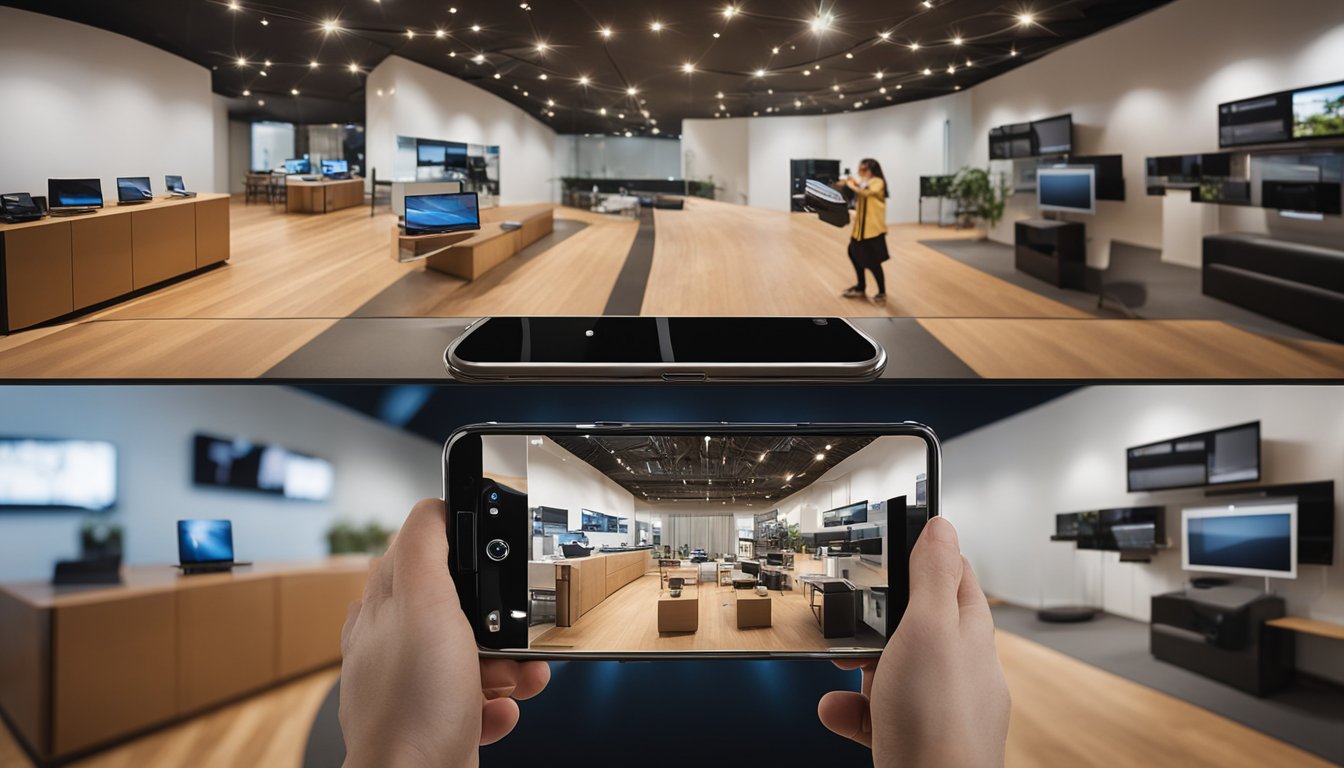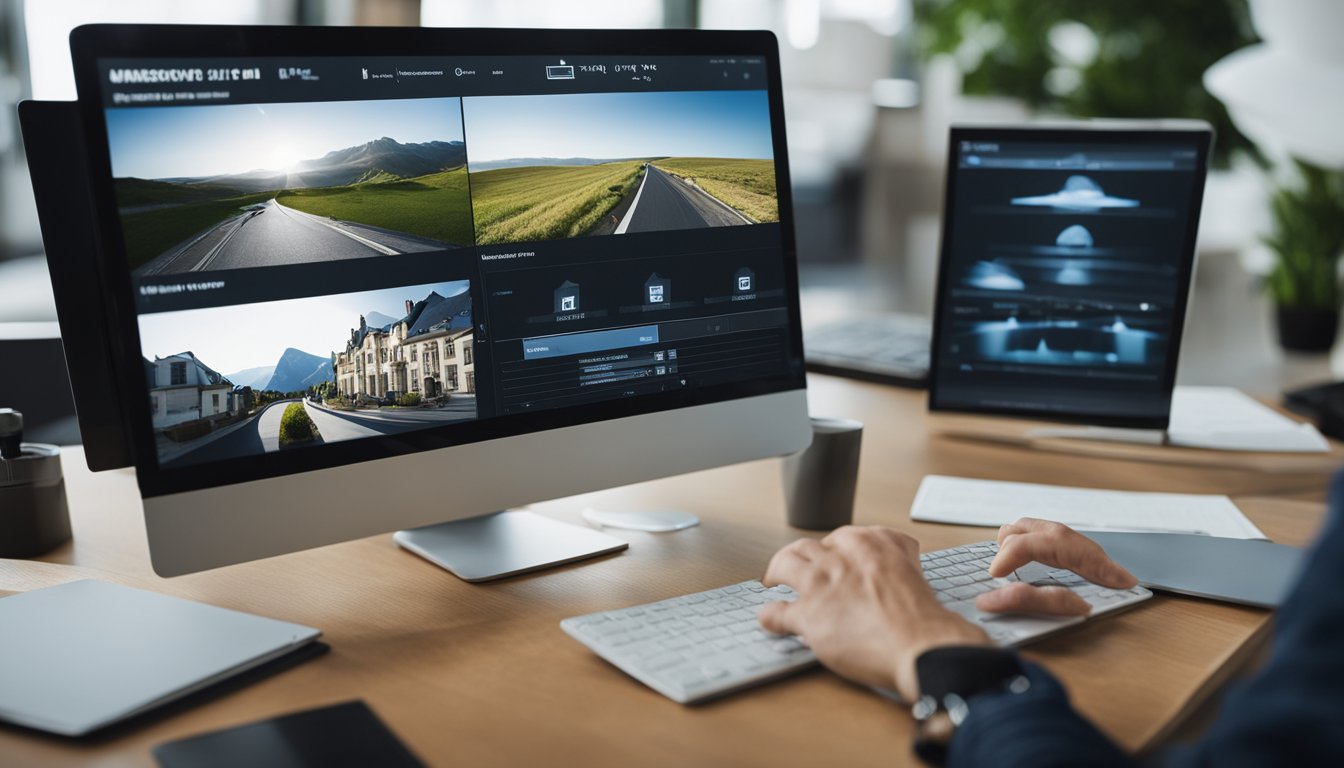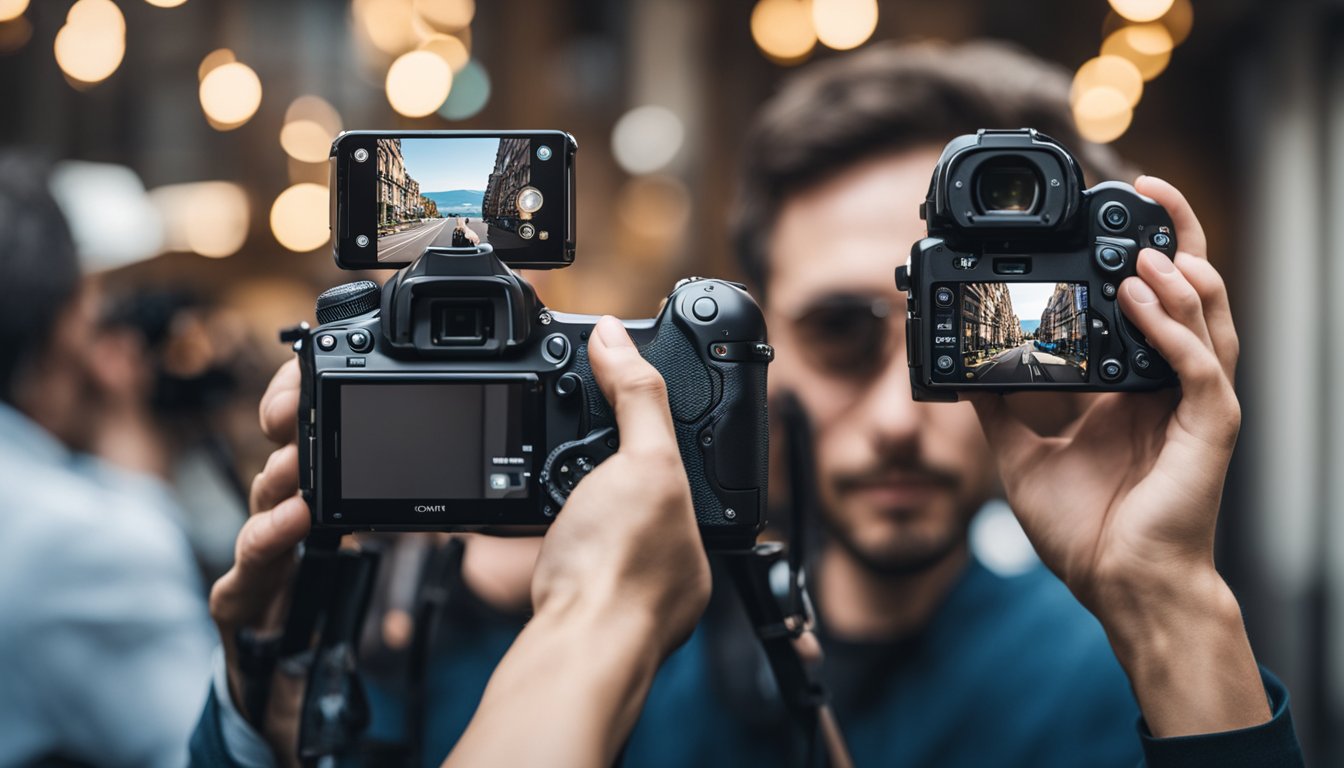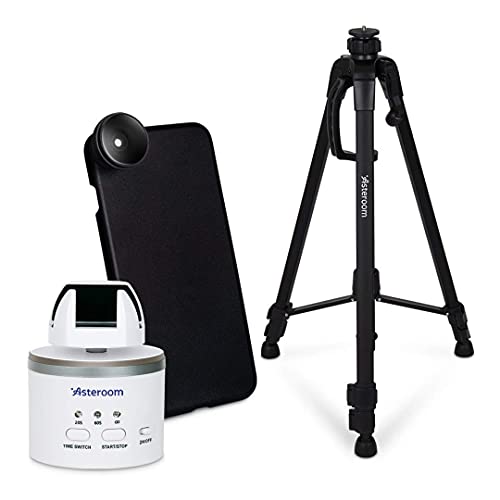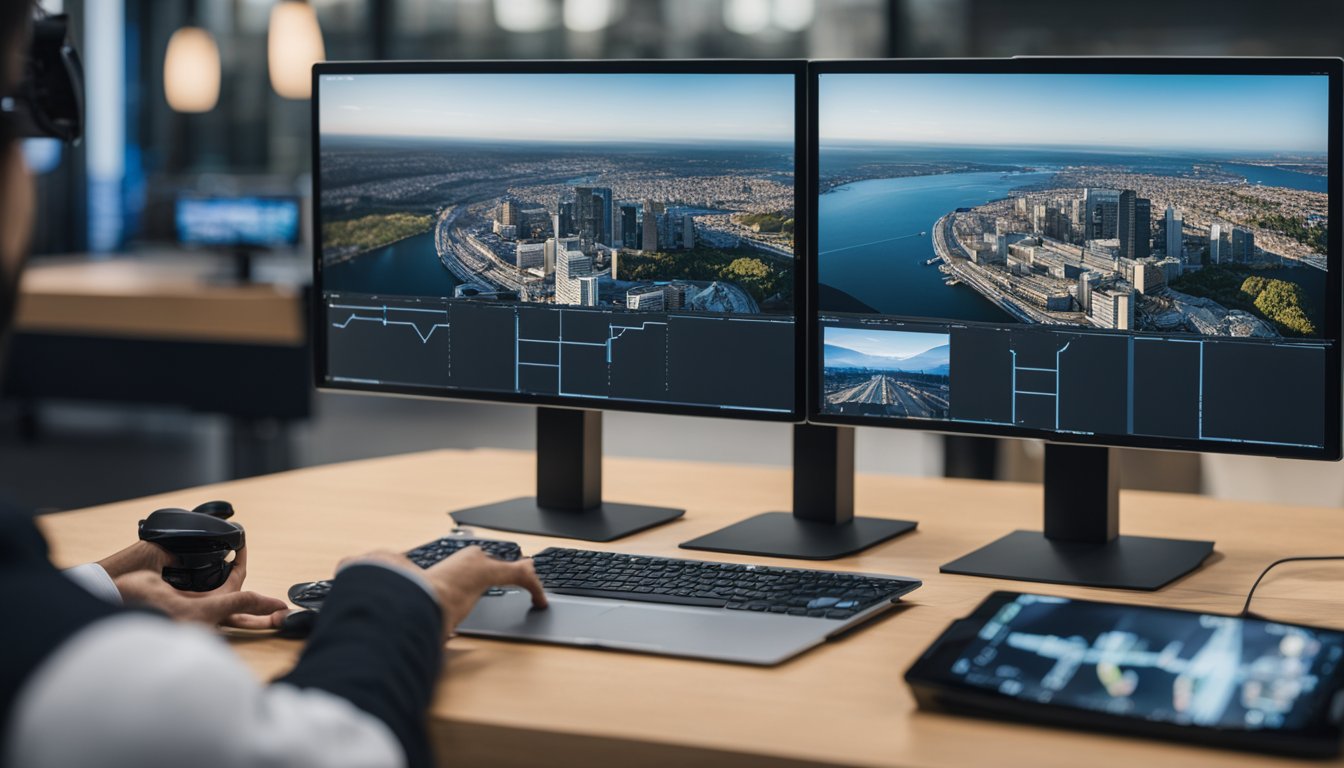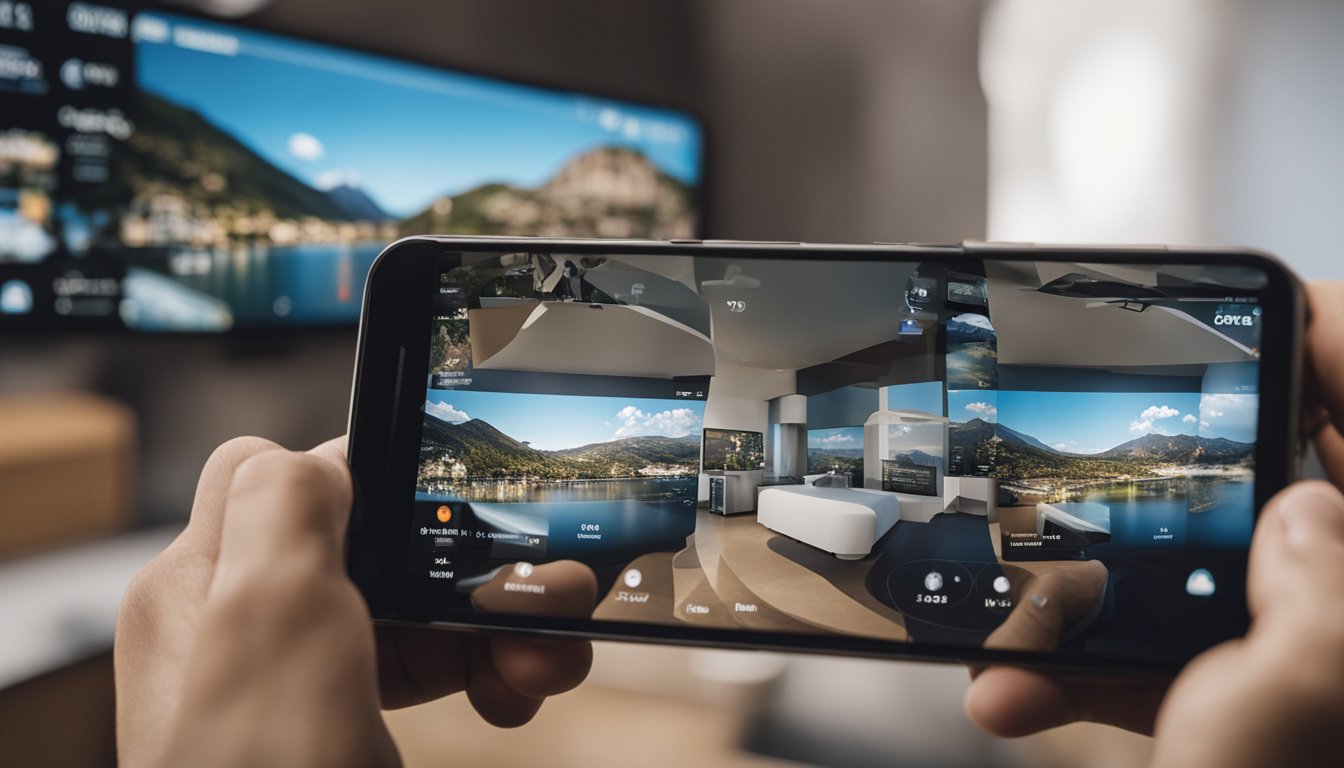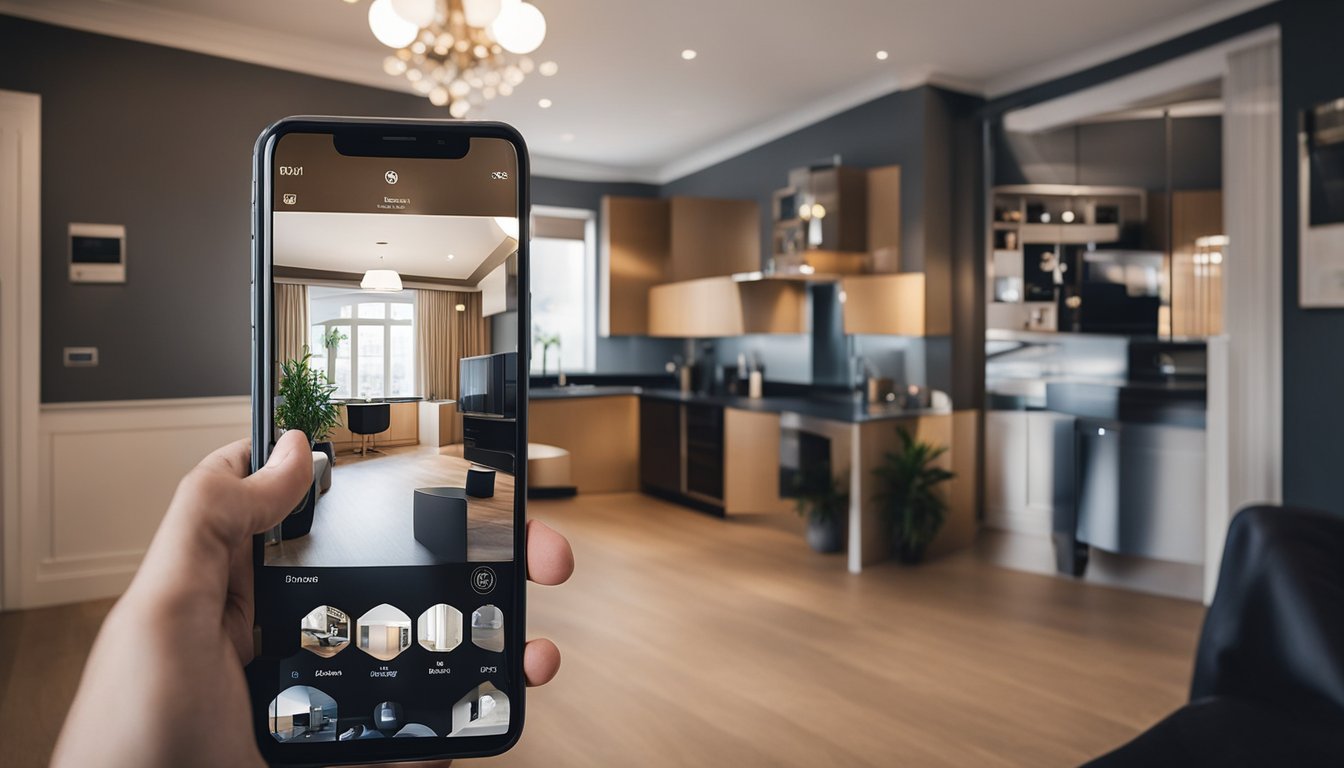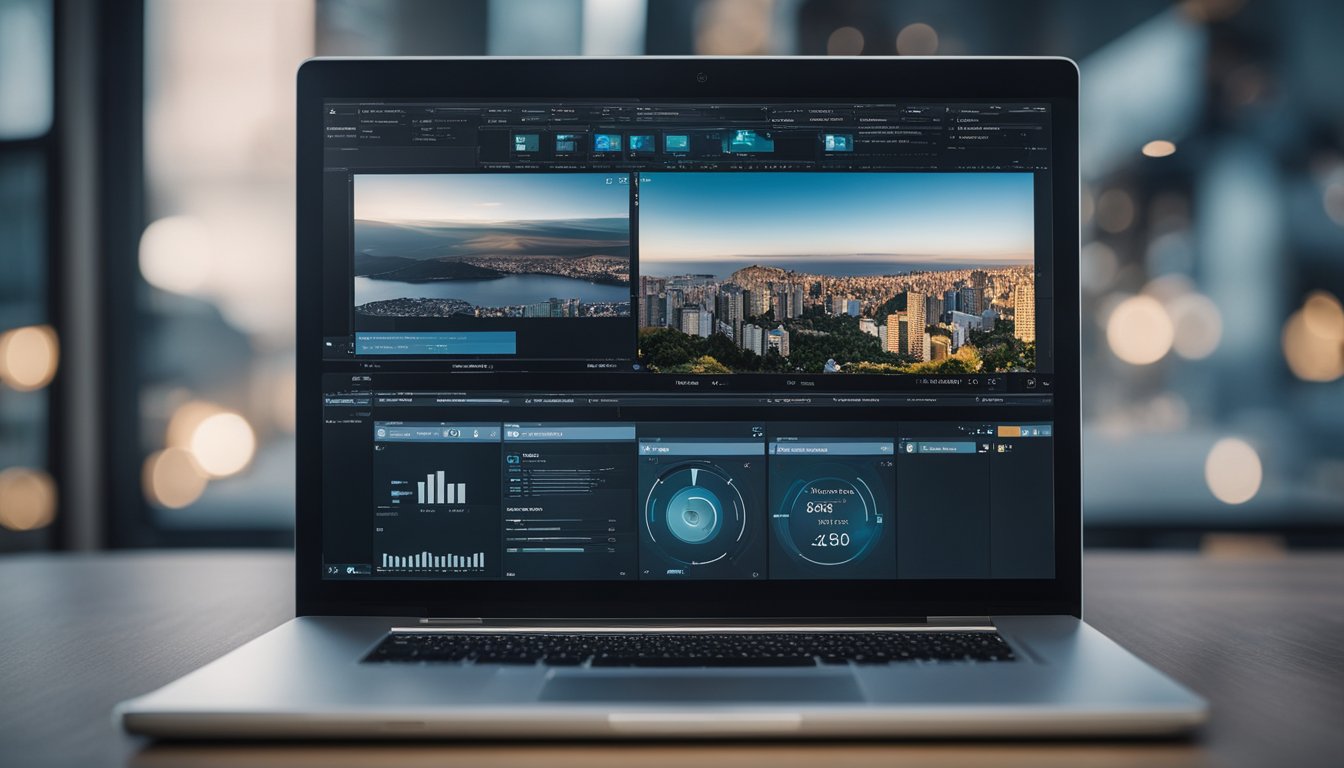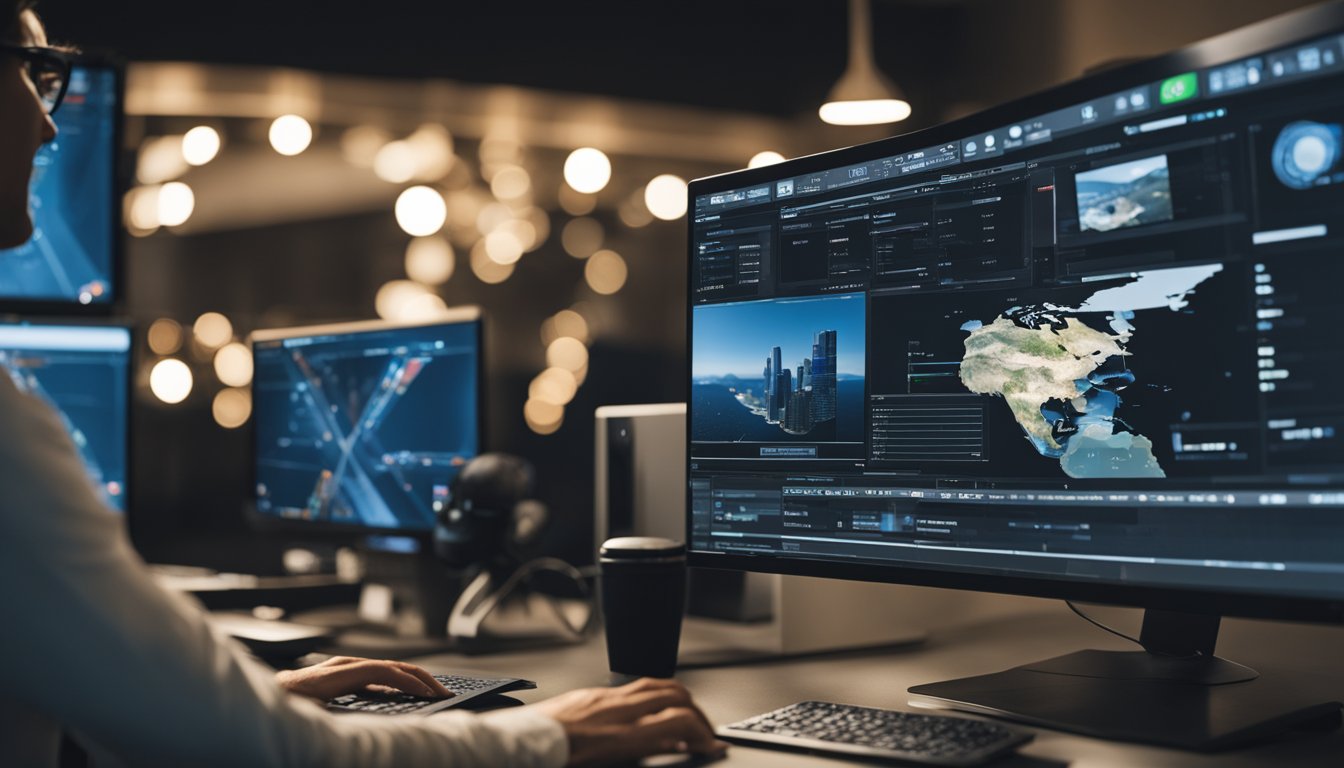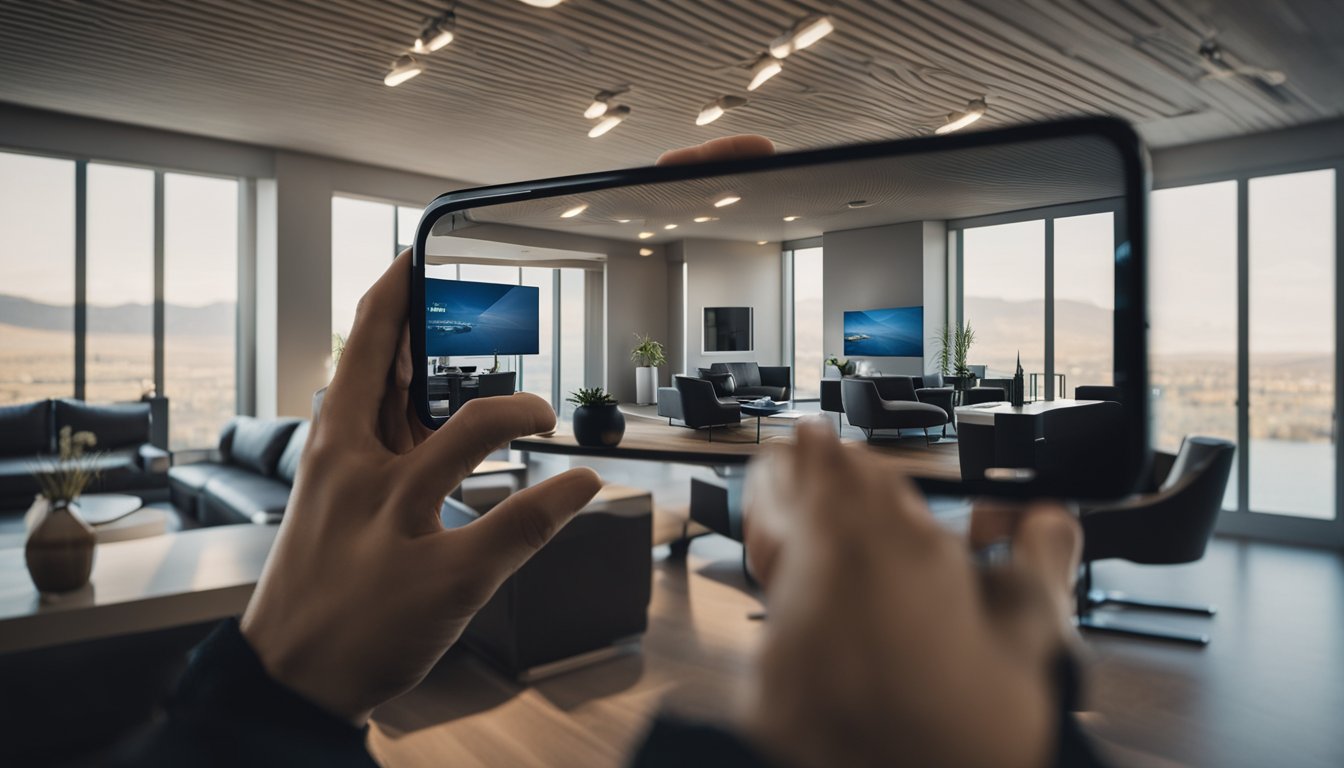If you’re interested in creating virtual tours but don’t have access to a 360 camera, don’t worry! There are still plenty of ways to create immersive and engaging virtual tours without one. In this article, we’ll explore some of the best techniques and tools for making virtual tours without a 360 camera. We’ll cover everything from planning and shooting techniques to software and hosting options.
Before we dive into the specifics, let’s first define what we mean by virtual tours. A virtual tour is a digital simulation of a real-world location, often used for marketing or educational purposes. Virtual tours can be created using a variety of media, including photos, videos, and 3D models. They can be viewed on a computer, phone, or VR headset, allowing users to explore and interact with the space in a way that feels almost like being there in person.
Key Takeaways
- Virtual tours can be created without a 360 camera using a variety of media and techniques.
- Planning and preparation are key to creating a successful virtual tour.
- Software and hosting options can help enhance your virtual tour and make it more interactive.
Understanding Virtual Tours
Virtual tours are an immersive way to experience a space without physically being there. They are created using virtual reality technology and can be viewed on a computer, smartphone or VR headset. In this section, we will cover the basics of virtual tours and their applications.
Virtual Reality Basics
Virtual reality (VR) is a simulated experience that can be similar to or completely different from the real world. VR technology uses computer-generated 3D environments to create a realistic experience for the user. In virtual tours, the user can move around the space and interact with objects as if they were really there.
Applications of Virtual Tours
Virtual tours have a wide range of applications. They are commonly used in real estate, hospitality, and tourism industries. In real estate, virtual tours allow potential buyers to view properties remotely, saving time and money. In the hospitality industry, virtual tours can be used to showcase hotels and resorts, giving potential guests a preview of what to expect. In the tourism industry, virtual tours can be used to showcase popular attractions and landmarks, allowing people to explore them from anywhere in the world.

Virtual tours can also be used for educational purposes. They can provide a virtual learning environment for students, allowing them to explore historical sites, museums, and other educational spaces.
Virtual tours can be created using 360-degree cameras, but they can also be made without one. There are various software tools available that allow you to create a virtual tour using panoramic photos. These tools can help you stitch together multiple photos to create a seamless 360-degree view of a space.
In the next section, we will discuss how to create a virtual tour without a 360-degree camera.
Planning Your Virtual Tour
Before creating a virtual tour without a 360 camera, it is essential to plan your space and equipment. In this section, we will discuss two crucial aspects of planning your virtual tour: Storyboarding Your Space and Equipment Checklist.
Storyboarding Your Space
« How to Use Ricoh 360 Camera: A Beginner’s Guide
360 Camera Manual: A Beginner’s Guide to Using Your New Device »
Storyboarding your space involves creating a visual representation of the virtual tour. It helps you identify the key features of your space and how to capture them. Start by sketching a rough floor plan of your space, and then highlight the areas you want to showcase in your virtual tour.
Consider the flow of your virtual tour, and how you want your audience to experience it. This will help you determine the best angles and positions to capture your space. You can also use storyboarding to identify potential issues that may affect the quality of your virtual tour, such as lighting or clutter.
Equipment Checklist
To create a virtual tour without a 360 camera, you will need a few essential pieces of equipment. Here’s a checklist to help you get started:
| Equipment | Description |
|---|---|
| Smartphone | You will need a smartphone with a high-quality camera to capture your space. |
| Tripod | A tripod will help you keep your smartphone steady and reduce camera shake. |
| Wide-angle lens | A wide-angle lens will help you capture more of your space in a single shot. |
| Lighting | Good lighting is essential for creating a high-quality virtual tour. Consider using natural light or investing in a lighting kit. |
Make sure to test your equipment before starting your virtual tour to ensure everything is working correctly. Additionally, consider using a microphone to capture high-quality audio, especially if you plan to include narration in your virtual tour.
By storyboarding your space and creating an equipment checklist, you can ensure that your virtual tour without a 360 camera is a success.
Shooting Techniques Without a 360 Camera
If you don’t have access to a 360 camera, don’t worry! You can still create an immersive virtual tour using your smartphone or camera. Here are some tips for shooting without a 360 camera.
Using a Smartphone
Your smartphone can be a great tool for creating a virtual tour. Most smartphones have a high enough resolution to capture detailed photos, and there are many apps available that can help you stitch them together into a tour.
When using your smartphone, make sure to hold it steady and level to avoid blurry or tilted photos. You can also use a tripod or stabilizer to keep your shots steady. It’s also a good idea to take multiple photos of each area from different angles to ensure you capture everything.
Camera Settings for Optimal Shots
If you’re using a camera, there are a few settings you can adjust to ensure you get the best shots for your virtual tour. First, make sure your camera is set to the highest resolution possible to capture as much detail as possible.
You should also pay attention to the lighting in the space you’re shooting. Natural light is always best, but if you’re shooting indoors, make sure to turn on all the lights to ensure the space is well-lit. You can also adjust your camera’s ISO and aperture settings to compensate for low light.
In addition, make sure to take multiple photos of each area from different angles to ensure you capture everything. You can also use a tripod or stabilizer to keep your shots steady.
By following these tips, you can create a virtual tour without a 360 camera that is just as immersive and engaging as one created with a specialized camera.
Creating a Virtual Tour with Software
If you don’t have access to a 360 camera, you can still create a virtual tour using virtual tour software. Here are a few steps to help you create a virtual tour using software.
Choosing the Right Virtual Tour Software
There are many virtual tour software options available, both free and paid. Consider what features you need, such as the ability to add hotspots, custom branding, and embedding options. Some popular virtual tour software options include MakeVT, Kuula, and Panoroo. Make sure to read reviews and compare features before choosing the right software for you.
Editing and Stitching Images
To create a virtual tour, you’ll need to take photos of your space and stitch them together using software. While you can use any photo editing software, Adobe Photoshop is a popular option for stitching images together. Once you have your images, import them into your virtual tour software and add hotspots to create an interactive experience.
When editing and stitching your images, keep in mind the following tips:
- Take photos from multiple angles to capture the entire space.
- Use a tripod to keep the camera steady and avoid blurry images.
- Make sure to edit your photos to ensure they are consistent in color and lighting.
Overall, creating a virtual tour without a 360 camera is possible using virtual tour software and photo editing software. Choose the right software for your needs and take high-quality photos to create an immersive experience for your viewers.
Enhancing Your Tour with Interactive Features
Now that you have created your virtual tour without a 360 camera, it’s time to add some interactive features to make it more engaging and informative. By adding hotspots and multimedia elements, you can create an immersive experience that will keep your audience engaged and interested in your content.
Adding Hotspots and Information
Hotspots are clickable areas within your virtual tour that allow your audience to interact with your content. You can add hotspots to highlight important features or provide additional information about a particular area. To add a hotspot, simply select the area you want to highlight and add a clickable icon or text box.
In addition to hotspots, you can also add information panels to your tour. Information panels can be used to provide additional details about a particular area or feature. You can include text, images, and even videos to make your tour more informative and engaging.
Incorporating Multimedia Elements
Incorporating multimedia elements such as sounds and videos can enhance your virtual tour and make it more engaging. You can add background music or sound effects to create a more immersive experience. To add sound, simply upload your audio file and add it to the appropriate area of your tour.
Videos can also be added to your virtual tour to provide additional information or showcase a particular feature. You can include videos of interviews, behind-the-scenes footage, or even virtual reality experiences. To add a video, simply upload the file and add it to the appropriate area of your tour.
By incorporating interactive features such as hotspots and multimedia elements, you can create a virtual tour that is both informative and engaging. Your audience will appreciate the extra effort you put into creating an immersive experience that they can enjoy from the comfort of their own home.
Hosting and Uploading Your Virtual Tour
https://www.youtube.com/watch?v=8lIR98oJouE&embed=true
Once you have created your virtual tour, it’s time to host and upload it. Here are some steps to help you get started.
Choosing a Hosting Platform
There are several hosting platforms available that can help you upload and share your virtual tour. One such platform is CloudPano. With CloudPano, you can easily create and display virtual tours in 360° and VR. You can upload, connect, and publish a 360° immersive experience with just a few clicks. No coding is required, and you can get started for free by signing up for an account.
Another option is to upload your virtual tour to a website or blog. You can do this by embedding a link to your virtual tour on your website or blog. This will allow your visitors to view your virtual tour without having to leave your website.
Uploading and Managing Files
Once you have chosen a hosting platform, it’s time to upload your virtual tour. If you have created your virtual tour on your computer, you can upload it to your hosting platform by using the upload feature. If you have created your virtual tour on an SD card, you can insert the card into your computer and upload the files to your hosting platform.
When uploading your files, make sure to organize them properly. This will make it easier for you to manage your files and make changes to your virtual tour in the future. You can also add descriptions to your files to help you remember what each file is for.
Once your files are uploaded, you can manage them by using the management tools provided by your hosting platform. This will allow you to make changes to your virtual tour, add or remove files, and share your virtual tour with others.
In conclusion, hosting and uploading your virtual tour is an essential step in sharing your creation with others. By choosing the right hosting platform and organizing your files properly, you can ensure that your virtual tour is easily accessible and enjoyable for your audience.
Promoting Your Virtual Tour
Once you have created a virtual tour, it’s time to promote it so that your potential customers can find it. In this section, we will discuss some effective ways to promote your virtual tour.
Marketing Strategies
One of the best ways to promote your virtual tour is through email marketing. You can send an email to your existing customers, telling them about your new virtual tour and how it can benefit them. You can also use email marketing to reach out to potential customers who have shown an interest in your business.
Another effective marketing strategy is to create a landing page for your virtual tour. The landing page should include all the relevant information about your virtual tour, such as the duration, the price, and the features. You can also include some images and videos to give your potential customers a sneak peek of what they can expect from your virtual tour.
Leveraging Social Media
Social media is a powerful tool for promoting your virtual tour. You can use platforms like Facebook, Twitter, and Instagram to reach out to your followers and share your virtual tour with them. You can also use social media to run targeted ads to reach a wider audience.
To make the most out of social media, you should create engaging content that your followers will want to share. You can also collaborate with influencers in your niche to reach a wider audience.
In conclusion, promoting your virtual tour is essential if you want to attract more customers and increase your revenue. By using email marketing, creating a landing page, and leveraging social media, you can reach out to your target audience and promote your virtual tour effectively.
Integrating Virtual Tours into Your Business
https://www.youtube.com/watch?v=GFZS7sC38GU&embed=true
In today’s fast-paced world, businesses are always looking for new ways to engage with potential customers. One way to do this is by integrating virtual tours into your business. Virtual tours are a great way to showcase your products or services and provide potential customers with an immersive experience. In this section, we will explore how virtual tours can benefit your business and how you can integrate them into your marketing strategy.
Real Estate and Virtual Tours
The real estate industry has been using virtual tours for quite some time now. Virtual tours provide potential buyers with a detailed look at the property without having to physically visit the location. This saves time and makes the buying process more convenient for the buyer. If you’re in the real estate industry, integrating virtual tours into your marketing strategy is a must. You can showcase your properties in a more engaging way and attract more potential buyers.
Enhancing Customer Experience
Virtual tours are not just limited to the real estate industry. Businesses in other industries can also benefit from virtual tours. For example, if you run a restaurant, you can create a virtual tour of your establishment and showcase the ambiance and decor. This will give potential customers a better idea of what to expect when they visit your restaurant. Similarly, if you run a retail store, you can create a virtual tour of your store and showcase your products in a more engaging way. This will enhance the customer experience and make it more likely for them to make a purchase.
In conclusion, virtual tours are a great way to engage with potential customers and showcase your products or services. If you’re in the real estate industry, integrating virtual tours into your marketing strategy is a must. However, businesses in other industries can also benefit from virtual tours. By creating a virtual tour of your establishment, you can enhance the customer experience and attract more potential customers.
Technical Considerations
When it comes to creating virtual tours without a 360 camera, there are a few technical considerations to keep in mind. In this section, we’ll cover some important factors to consider to ensure that your virtual tour is of high quality and compatible with various devices.
File Formats and Compatibility
One of the most important things to consider when creating a virtual tour without a 360 camera is the file format. Not all file formats are compatible with all devices, so it’s important to choose a format that can be viewed on a wide range of devices.
JPEG is the most common file format for 360 photos, and it’s widely supported by computers and mobile devices. However, if you want to maintain high image quality, you may want to consider using a RAW file format instead. RAW files can be edited and adjusted without losing image quality, which can be important if you want to make changes to your photos before creating your virtual tour.
Maintaining Image Quality
Another important consideration when creating a virtual tour without a 360 camera is maintaining image quality. To ensure that your virtual tour looks great, you’ll need to use high-resolution photos and avoid compressing them too much.
When taking photos for your virtual tour, it’s important to use a high-resolution camera. The higher the resolution, the more detail your photos will capture, which can make a big difference in the quality of your virtual tour. However, keep in mind that higher resolution photos will also take up more storage space on your computer or mobile device.
Once you have your photos, you’ll need to edit them to ensure that they look their best. Avoid compressing your photos too much, as this can result in a loss of image quality. Instead, use a photo editing tool to adjust the brightness, contrast, and other settings to make your photos look as good as possible.
By considering file formats, maintaining image quality, and using high-resolution photos, you can create a virtual tour without a 360 camera that looks great and is compatible with a wide range of devices.
Accessibility and User Experience
When creating a virtual tour without a 360 camera, it’s important to consider the accessibility and user experience of your platform. Here are some tips to ensure that your virtual tour is user-friendly and inclusive for all users.
Designing for All Users
Designing for all users means creating a platform that is accessible to everyone, regardless of their abilities. This includes users with visual, auditory, and physical impairments. To make your platform more accessible, consider the following:
-
Provide customization options: Allow users to adjust the font size, color contrast, and other visual elements of your platform to suit their needs.
-
Include logos: Use logos and other visual cues to help users navigate your platform. For example, use a home icon to indicate the home page, and a magnifying glass to indicate the search function.
-
Offer a VR mode: Virtual reality can be a powerful tool for users with physical impairments. By offering a VR mode, you can provide a more immersive experience for these users.
Navigation and Ease of Use
Navigation and ease of use are key to creating a user-friendly virtual tour platform. Here are some tips to make your platform easy to navigate:
-
Use clear and concise language: Use simple, straightforward language to describe each section of your platform. Avoid using technical jargon or complex terminology.
-
Make it easy to find information: Use clear headings and subheadings to organize your content. Provide a search function to help users find specific information.
-
Keep it simple: Avoid cluttering your platform with too many features or options. Keep the interface clean and simple, with only the most essential features visible.
By following these tips, you can create a virtual tour platform that is accessible and user-friendly for all users.
Future Trends in Virtual Tours
As technology continues to evolve, so do the ways in which we create and experience virtual tours. In this section, we’ll explore some of the emerging trends and technologies that are shaping the future of virtual tours.
Emerging Technologies
One of the most exciting developments in virtual tours is the emergence of virtual reality (VR) video. With VR, users can experience a 360° virtual reality environment that feels as if they are actually there. This technology is already being used in some immersive virtual tours, and we can expect to see more of it in the future.
Another emerging technology in virtual tours is the use of augmented reality (AR). With AR, users can see virtual objects overlaid onto the real world, creating a unique and interactive experience. This technology has the potential to revolutionize the way we create and experience virtual tours.
The Evolution of Virtual Reality
Virtual reality has come a long way since its inception, and we can expect to see even more advancements in the future. One of the most exciting developments is the use of haptic feedback, which allows users to feel physical sensations within the virtual environment. This technology has the potential to create even more immersive virtual tours.
Another trend in virtual reality is the use of photorealistic environments. With advancements in computer graphics, it is now possible to create virtual environments that are indistinguishable from the real world. This technology has the potential to create even more realistic and engaging virtual tours.
In conclusion, the future of virtual tours is bright, with new technologies and advancements on the horizon. Whether it’s through the use of VR, AR, or other emerging technologies, we can expect to see even more immersive and engaging virtual tours in the years to come.
Frequently Asked Questions
What software can I use to create a virtual tour for free?
There are several free software options available to create virtual tours, such as Google Tour Creator, HoloBuilder, and Cupix. These software options offer various features, including 360-degree photo and video integration, hotspot creation, and virtual tour customization.
Can I create a virtual tour using just my smartphone?
Yes, you can create a virtual tour using just your smartphone. There are several apps available for both iOS and Android devices that allow you to create virtual tours using your phone’s camera. Some popular options include Panorama 360, Roundme, and Kuula.
What are the essential elements I need to create a virtual tour?
To create a virtual tour, you will need a device with a camera, such as a smartphone or a DSLR camera, a tripod to keep your camera steady, and software to stitch your photos or videos together into a virtual tour. You may also need additional equipment such as a 360-degree lens attachment or a panoramic head for your tripod.
How can I convert my regular photos into a virtual tour experience?
To convert your regular photos into a virtual tour experience, you can use software such as Pano2VR or krpano to stitch your photos together and create a virtual tour. These software options allow you to add hotspots, audio, and other interactive elements to your virtual tour.
Is there a way to make a virtual tour compatible with Android devices?
Yes, there are several virtual tour software options that are compatible with Android devices, such as Google Tour Creator, HoloBuilder, and Roundme. These software options allow you to create virtual tours that can be viewed on both iOS and Android devices.
What are some examples of virtual tours I can look at for inspiration?
There are many virtual tours available online that you can use for inspiration, such as museums, art galleries, real estate listings, and travel destinations. Some popular virtual tour websites include Matterport, YouVisit, and VirtualTourEasy.

